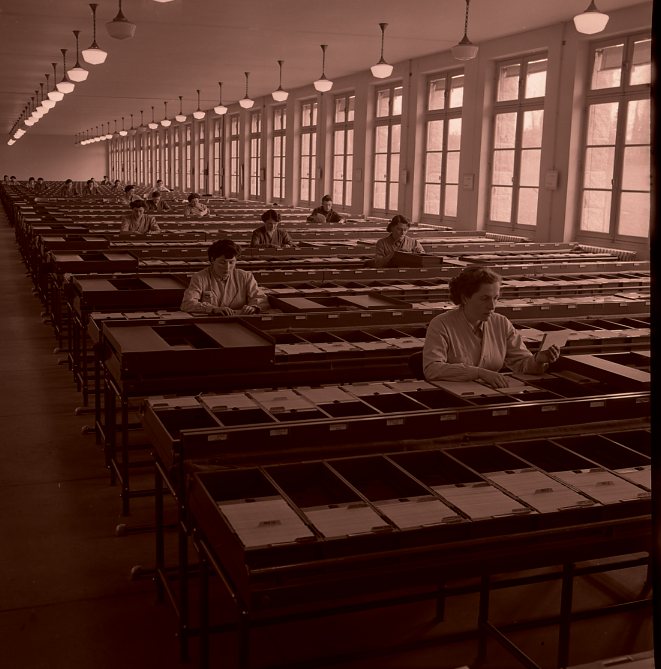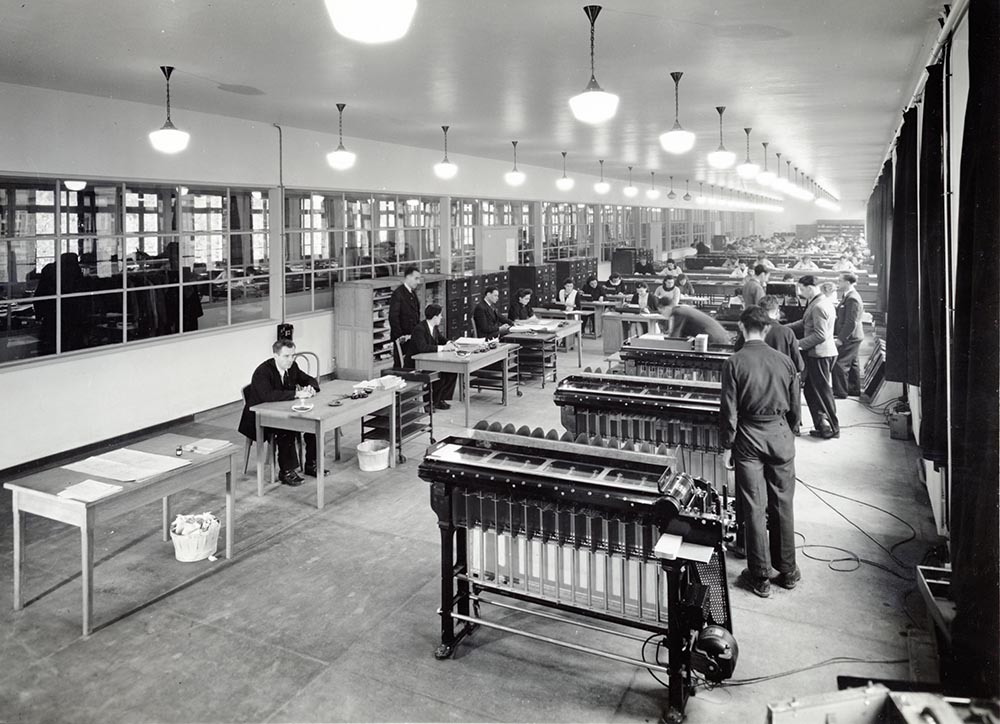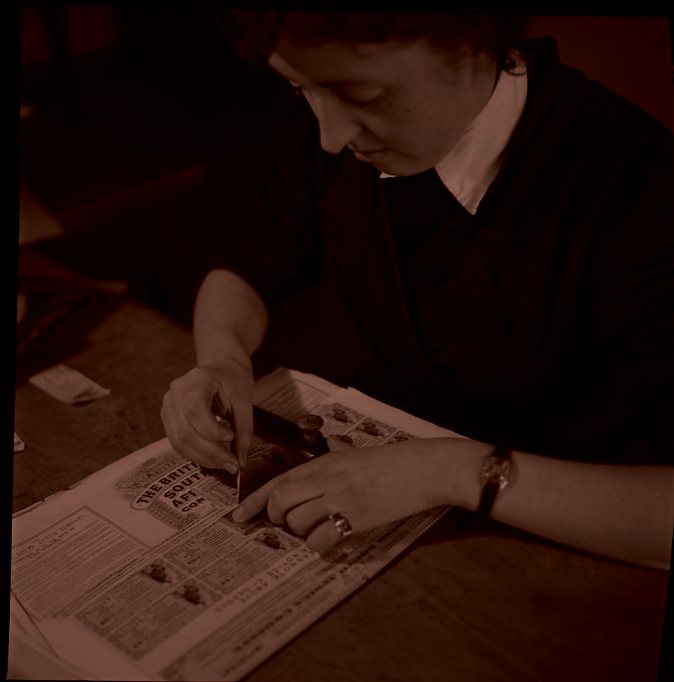The securities depository of La Conninais in Brittany (France) : a war-driven decentralisation

In the tense international context preceding the Second World War, the government invited banks “to shelter, far from the border and threatened centres, the securities files” of their clients. On December 23, 1938, the Banque Nationale pour le Commerce et l’Industrie (BNCI) thus decided to acquire the La Conninais estate, covering some ten hectares, mainly located in the commune of Taden (Brittany in France), two kilometers from the town of Dinan; a manor house and its outbuildings supported by solid buttresses, a vegetable garden, an orchard and a wooded park. This complex, which is a landmark in the history and landscape of Dinan, has been the subject of several successive developments, showing the bank’s constant adaptation to the profound changes in customer transactions and their processing. In 2001, the manor house and its annexes were sold to be divided into flats, while the impressive granite building, whose construction began in March 1939, was retained.
Safeguarding client securities files, an urgent matter due to international tensions for the bank
In 1938, worsening international tensions led the bank to actively seek a fallback location for its securities based north of the Le Havre-Belfort line. At the same time, Managing Director Alfred Pose launched analyses to improve the organisation of securities services attached to the branches by centralising the manual handling of securities and coupons and their accounting treatment at a single site.
After the missed prospects of buying a building in Royat (France) and then in Cognac (France), the director of the Dinan branch announced the sale of the La Conninais estate. Far from borders and industrial centres, close to a popular British holiday resort, with good road links and a railway line recently equipped with a new station, the estate also has a land reserve where buildings can be built to house all the conservations in Paris and the provinces. The bank also ensures that recruitment opportunities are available locally, commissions a study of the subsoil and seeks the agreement of the chief architect of the National Heritage (Monuments Historiques), as the property has been listed as a building of the National Heritage since 1926. Finally, the bank’s directors pointed out that “the Dinan facility” exempted the bank from having to buy a building in Paris to relieve the head office at 16 Boulevard des Italiens in Paris, “at least for a long time”.

The depository building: a neo-Breton architectural masterpiece conservation
Just before the signing of the deed of sale, the construction project for the new building was entrusted to André Aubert (1905-1987), the young architect who won in 1934 the competition for the State and City of Paris Museums of Modern Art, the Palais de Tokyo, designed for the 1937 World’s Fair, against 128 projects including those of Tony Garnier, Le Corbusier and Robert Mallet-Stevens. André Aubert also made a name for himself in 1932 at the Grand Prix de Rome, whose very particular subject – the palace of a prelate in Italy – highlights his mastery of composition in mountainous sites and his respect for regional architectural traditions.
At the beginning of February 1939, André Aubert’s project was approved. The new building was to be built on the former orchard and annexes, including a chicken house and aviary, on the hillside, so that visitors arriving from the town of Dinan would discover at the same time its mass emerging from the valley, and the old manor house with its outbuildings. The plan, with its three bodies of buildings forming a U with an enclosed rear courtyard, installs the securities services in daylight, an originality which is directly inspired by the Central Securities Depository of the Banque de France in Poitiers. As BNCI’s ambition was to build a model center, its Organization team carried out a complete survey of the building and no doubt Alfred Pose visited it when he visited the Poitiers branch on 8 June 1938.
On 21 March 1939, the shell contract was signed with the Desplats-Lefebvre company. Work began immediately and was scheduled to last a year. They were not completed until eight years later, after overcoming the considerable difficulties caused by the declaration of war and the interruptions ordered by the construction of the Atlantic Wall. With the invasion of France and then the Occupation, the relocation of the conservations from the North and the East was carried out in spite of everything because it could not wait: the manor house was converted into a workplace. Securities were stored in the towers, and the various rooms became offices, staff accommodation, but also a canteen, rest room, nursery and relaxation room. The social, cultural and sporting activities remain in all the memories as they are exemplary, like what the Banque de France has achieved in Poitiers. Well before the end of the works, the social action centre (CAS) of Dinan is created.

This massive and austere building, with a defensive character, was anchored in the neo-Breton architectural movement: walls of local granite ashlar, high slate roofs from the Monts d’Arrée, imposing dormer windows with curved pediments. The new access, carved into the rock, is via the road lined with plane trees, which has replaced the old steep and winding avenue in the shade of majestic beech and chestnut trees, and from which the vertiginous granite staircase starts.
La Conninais: a model administrative centre
As early as July 1939, BNCI launched the rationalization of its internal organization with Bull and Hollerith, to equip the various departments with the most efficient statistical and electro-accounting machines. On the ground floor, the two immense 60-metre long wings each house a work room and 14 vaults where customer securities are kept. Special furniture is created, such as the rail-mounted chairs for the customer file or schedule checkers. The site is also equipped with carpentry, foundry and mechanical workshops so that any repairs can be made on site, without delay and in complete safety. When new banking machines are installed, an engineer is on site to ensure that the ever-increasing mechanisation of processing is not hindered at any time.
Securities processing operations in images
In 1951, the BNCI equipped its administrative centers with perforated card machines; this was a significant step for the Dinan center: the number of employees decreased from around 900 to 500. Then, in 1953, the first electronic machines came into operation. These technological developments were accompanied by administrative simplifications and new working methods, which overturned the organisation. Space became available and while a Bull Gamma 30 computer was installed in 1963, on the first floor of the right wing, two vaults were converted into greenhouses for precious metals.

The dematerialization of securities in France on 3 November 1984 profoundly changed the way Dinan’s securities depository operates: the vaults were gradually emptied of paper securities, and the numerous and meticulous cutting operations disappeared in favour of inputting data on computer keyboards. However, the accounting management functions were confirmed in 1990 when Dinan became the Dinan Securities Accounting Centre (CCTD). One internal restructuring project followed another, following the profound reorganization of the (back-offices) of the French network and of specialized trades.
Although the workforce is steadily declining due to productivity gains due to IT and then digitisation, the site has been maintained in its activity of supporting the French retail banking network and some specialised professions.
Finally, the year 2020 marks the arrival of the BNP Paribas historical archives and object collection, a consequence of real estate reorganizations in the Île-de-France region (France). The archives will occupy part of the vaults and one of the wings of the building, while the collection of objects will be able to be further enhanced thanks to the concept of a visitable reserve.

Lisez la news « Un déménagement et un nouvel écrin pour les collections historiques d’archives et d’objets de BNP Paribas














